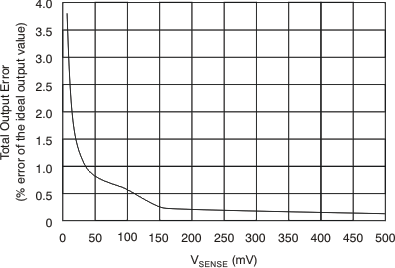SBOS938C October 2018 – June 2020 INA901-SP
PRODUCTION DATA.
- 1 Features
- 2 Applications
- 3 Description
- 4 Revision History
- 5 Pin Configuration and Functions
- 6 Specifications
- 7 Detailed Description
- 8 Application and Implementation
- 9 Power Supply Recommendations
- 10Layout
- 11Device and Documentation Support
- 12Mechanical, Packaging, and Orderable Information
Package Options
Mechanical Data (Package|Pins)
- HKX|8
Thermal pad, mechanical data (Package|Pins)
Orderable Information
6.7 Typical Characteristics
At TA = 25 °C, VS = 12 V, VCM = 12 V, and VSENSE = 100 mV, unless otherwise noted.
| CLOAD = 1000 pF |

| VS = 18 V |





(10-mV to 20-mV Input)






(10-mV to 100-mV Input)
